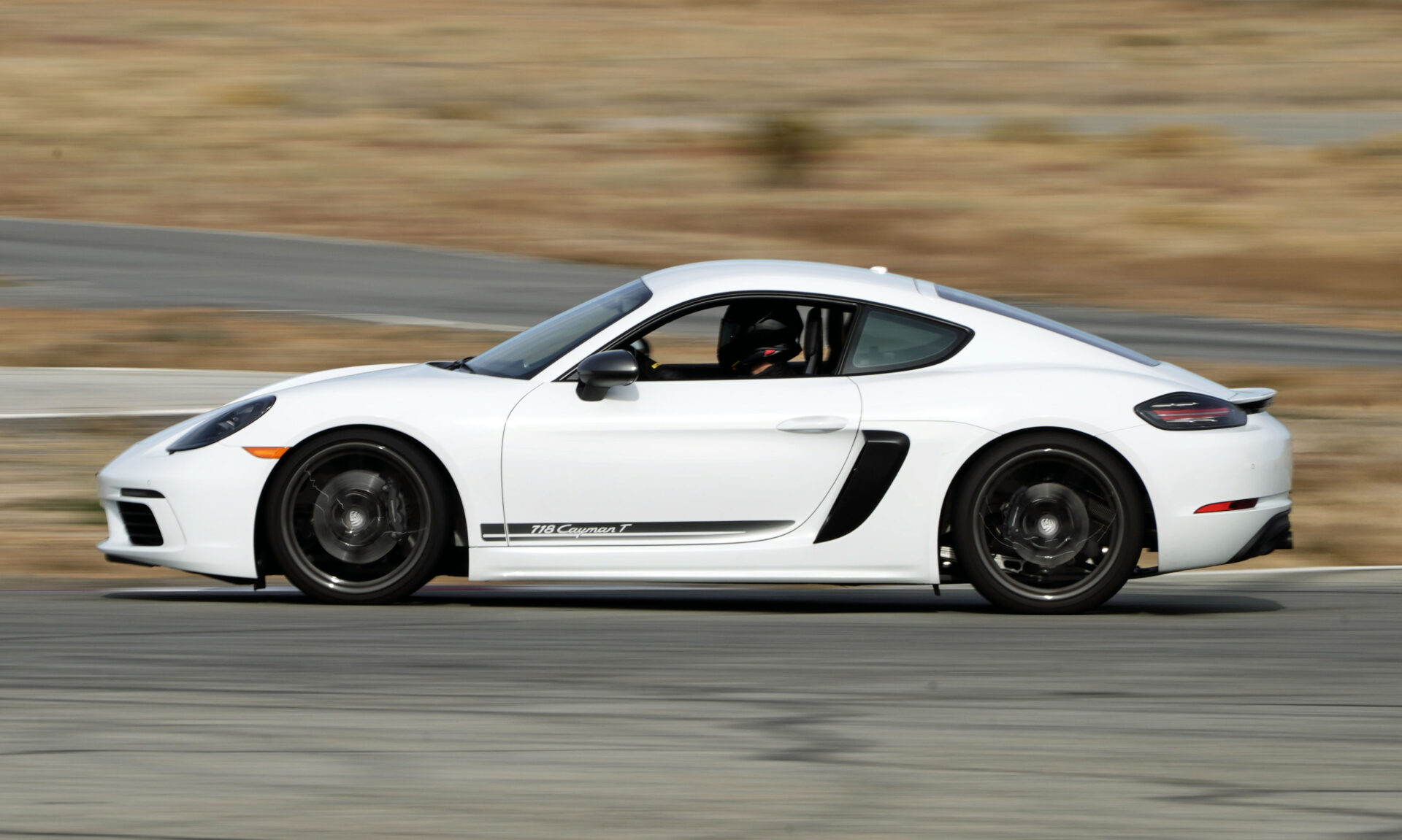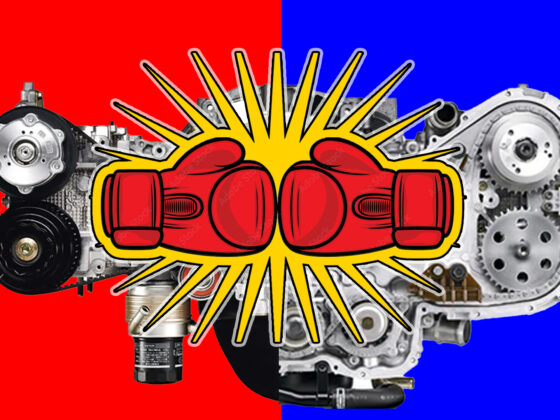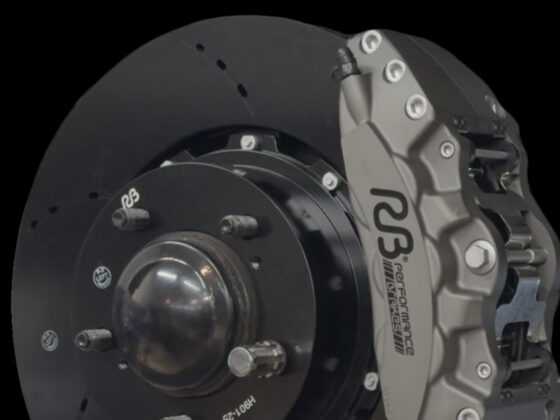 Thanks to Mike for this picture of the car getting its second car wash. I did give the car a real car wash after this. Current tallies: oil changes = 2, car washes = 2. This was at the bottom of the wet hill where I tried to work on my drifting skills. I suck at it. I ended up putting about 35 miles on the car with a mix of time on the auto-x, road course, wet hill, the kick plate course, and a bit of time taking breaks and standing around over the hour and a half session. The road course at PECLA is my favorite in all of SoCal because of its mix of low-speed and high-speed corners with elevation changes thrown in.
Thanks to Mike for this picture of the car getting its second car wash. I did give the car a real car wash after this. Current tallies: oil changes = 2, car washes = 2. This was at the bottom of the wet hill where I tried to work on my drifting skills. I suck at it. I ended up putting about 35 miles on the car with a mix of time on the auto-x, road course, wet hill, the kick plate course, and a bit of time taking breaks and standing around over the hour and a half session. The road course at PECLA is my favorite in all of SoCal because of its mix of low-speed and high-speed corners with elevation changes thrown in.
 The next track day was at Streets of Willow. In the second half of the day, I remembered to manually activate the rear spoiler. Otherwise, it raises somewhere around 80mph and goes back down when the car goes below 60mph or so. Therefore, the spoiler was going up and down a couple times every lap until I manually put it in the up position.
The next track day was at Streets of Willow. In the second half of the day, I remembered to manually activate the rear spoiler. Otherwise, it raises somewhere around 80mph and goes back down when the car goes below 60mph or so. Therefore, the spoiler was going up and down a couple times every lap until I manually put it in the up position.
 I couldn’t get the tow hook to install at first. The threads were painted in this black coating, so I thought the coating was the issue at first. After struggling for a bit more, I realized the threads on the tow hook are left-hand threaded. Why did Porsche do that? I have no clue.
I couldn’t get the tow hook to install at first. The threads were painted in this black coating, so I thought the coating was the issue at first. After struggling for a bit more, I realized the threads on the tow hook are left-hand threaded. Why did Porsche do that? I have no clue.
 Coming off the track hot to measure the brake temperatures, there was some smoke coming off the fronts. And I pegged my IR gun at its 500C measurement range. The S2000 with the StopTechs never got this hot, but the 718 T has about the same size front brakes and another 60hp. I would say the stock everything brakes are at the limit with this car only having 300hp. The pedal got a little soft on me from the repeated braking from 110mph to 45mph coming down the front straight. I’d ballpark at about 85% firmness on the track and it has recovered to about 90%.
Coming off the track hot to measure the brake temperatures, there was some smoke coming off the fronts. And I pegged my IR gun at its 500C measurement range. The S2000 with the StopTechs never got this hot, but the 718 T has about the same size front brakes and another 60hp. I would say the stock everything brakes are at the limit with this car only having 300hp. The pedal got a little soft on me from the repeated braking from 110mph to 45mph coming down the front straight. I’d ballpark at about 85% firmness on the track and it has recovered to about 90%.
 The front calipers were about the same temperature as I saw at PECLA.
The front calipers were about the same temperature as I saw at PECLA.




13 comments
Check out the AWE Tuning “Foiler” wind diffusers—they make high-speed, window-down driving a much better experience.
Yup, I learned about those about five years ago. I’m typically a function over form type of guy, but I don’t particularly care for how the foiler looks. And it only comes into play during track days. Functionally, I do wonder if it would affect the airflow into the side scoops. On a 911 Carrera, not an issue as they don’t have the side scoops. Maybe come into play on the 911 Turbo and GT cars.
Jaguar’s also have reversed threads on the tow hook for no good reason. I learned this during a snow storm on a busy street while trying to get my wife’s car unstuck. Not the best place to spend 10 minutes trying to figure out why the hook won’t thread in.
LH threads on the tow hook are to prevent it from being easily used in some other manner, separate from the car, for which it is not rated… such as bolted to a hoist and used for vertical lifting.
Huh… learn something new everyday. So now the question is…. how many people tried using the tow hook not for its intended purpose and got hurt.
I was taught the LH thread is necessary so that when the tow cable is pulled taut, the direction of the cable winding would not start loosening the tow hook.
Most VW/Audi cars as far as I know are like that.
Not sure about Porches though, I remember the 964 having a RH threaded tow hook.
Excellent write up! I’m looking forward to seeing what you do to make it a better street and track car. I’m always baffled at how Porsches can pull over 1G with inferior suspension like McStruts and ~0 degree front camber alignment. It seems to defy the law of physics, but it’s probably more like it’s taking advantage of the laws of physics. Your knowledge and findings are very appreciated in the 718 community.
I love coming back here for the Cayman T updates. Thank you for the detailed write ups!
Are the front struts double bolted to the hub? I dial in some negative front camber by switching out the top bolt with one with a slightly smaller diameter one and pushing in the hub. Seems to get an east 2-3 degrees. It’s amazing how much better the front feels with such a simple mod. I make sure to use a high grade bolt. I also lighten my cars significantly from stock.
I’ll have to look at the strut design. What the Cayman and 911 chassis’ do have are slotted mounting holes for the upper strut mounts. I’ll have the details in the next article, but that allowed me to dial in about -1.5 deg of camber up front. Options for getting more camber are adjust camber plates and GT3 lower control arms to get up to the -3 or more range. On my old Evo8, going from whatever the stock camber was to -3 with adjustable camber plates made a world of difference. On Project S2000, I was running -2.8.
Yeah, looks like you will need some new hardware:
“You need minimum -2 degrees all around for the track. The outside wear is from a lack of negative camber. I run -2.5 to -3 in my Cayman. You’re likely going to need a method for adjusting camber in the front. The OE slotted top mounts are very limited in adjustment range. The GT3 LCAs work well for a dual purpose car. For cars that see a good bit of track time and aren’t driven in the winter we lean towards SPL. Given you’re on stock suspension I’d suggest GT3 LCAs.”
Yup, absolutely need new hardware to get to -3deg camber. I made a full build list of parts before I even got the car 🙂 The rate I’m destroying the shoulders of the tires and the fact the stock thermal system is good enough for the stock 300hp in moderate weather has shifted my parts purchase order a bit. I was originally going to attack the engine thermal system first but now I’ll get suspension bits next.
I love all the data you’re gathering before doing any mods.
Also “late apex point and shoot”? That’s how you drive the grey MotoIQ Project Mustang, too. 😀